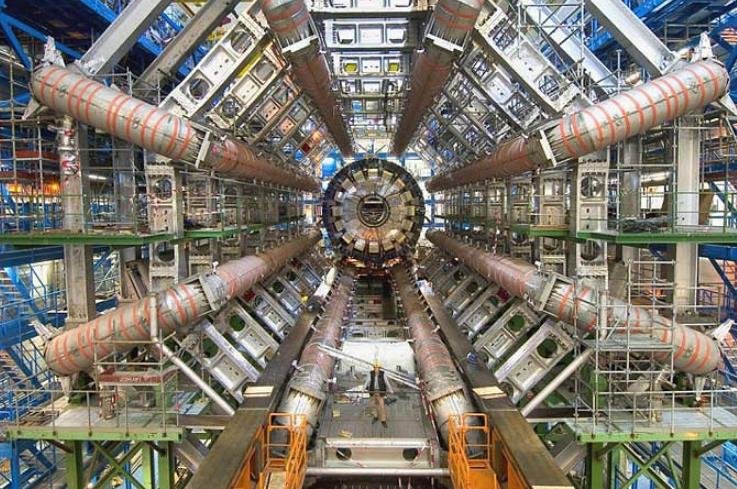CERN, the European Organization for Nuclear Research, has announced its progress in developing the Future Circular Collider (FCC), a new generation of particle collider that will surpass the current Large Hadron Collider (LHC) in size and power. The FCC will aim to explore the mysteries of the universe and discover new particles that could revolutionize physics.
The FCC is a proposed project that will build a circular tunnel with a circumference of 90 to 100 kilometers, which will house a particle accelerator that will smash subatomic particles together at a maximum energy of 100 teraelectronvolts (TeV). The LHC, which is the world’s largest and most powerful particle collider, has a circumference of 27 kilometers and a maximum energy of 14 TeV.
The FCC will use the same technology as the LHC, which consists of superconducting magnets that bend and focus the beams of particles, and detectors that measure the collisions and the resulting particles. However, the FCC will have stronger magnets, larger detectors, and more advanced electronics and computing systems.

The FCC will also have the flexibility to operate in different modes, such as:
- Electron-positron collisions, which will produce clean and precise measurements of the properties of particles, such as the Higgs boson, which was discovered at the LHC in 2012.
- Proton-proton collisions, which will produce high-energy and complex events that could reveal new particles and phenomena, such as dark matter, extra dimensions, and quantum gravity.
- Electron-proton collisions, which will provide a deeper understanding of the structure and behavior of protons, which are the building blocks of matter.
Why is the FCC important and what are its goals?
The FCC is important because it will push the frontiers of science and technology, and address some of the fundamental questions about the nature of the universe and its origins. The FCC will also complement and extend the research done at the LHC, which has already made remarkable discoveries and confirmed the predictions of the Standard Model, the theory that describes the interactions of the known particles and forces.
Some of the main goals of the FCC are:
- To test the validity and limits of the Standard Model, and to look for signs of new physics beyond it.
- To measure the properties and interactions of the Higgs boson, and to explore its possible connection to the origin of mass and the nature of the vacuum.
- To search for new particles and phenomena that could explain the mysteries of dark matter, dark energy, and the imbalance of matter and antimatter in the universe.
- To study the quantum aspects of gravity and the possible existence of extra dimensions of space and time.
- To advance the knowledge and innovation in the fields of particle physics, engineering, computing, and education.
What is the status and timeline of the FCC?
The FCC is currently in the conceptual design phase, which started in 2014 and will end in 2024. The conceptual design report, which was published in 2019, outlines the scientific and technical aspects of the project, as well as the cost and schedule estimates. The report also identifies the challenges and risks involved, and the potential benefits and impacts of the project.
The next phase of the project will be the technical design phase, which will start in 2025 and will last until 2030. This phase will involve the detailed design and engineering of the components and systems of the FCC, as well as the preparation of the construction and operation plans. The technical design phase will also require the approval and support of the CERN member states and the international scientific community.
The construction phase of the project will start in 2031 and will last until 2040. This phase will involve the excavation of the tunnel, the installation of the accelerator and the detectors, and the commissioning and testing of the facilities. The construction phase will also require the collaboration and coordination of various contractors, suppliers, and stakeholders.
The operation phase of the project will start in 2041 and will last until 2060. This phase will involve the running and maintenance of the FCC, as well as the analysis and dissemination of the scientific data and results. The operation phase will also require the continuous improvement and upgrade of the FCC, as well as the training and education of the researchers and staff.
















